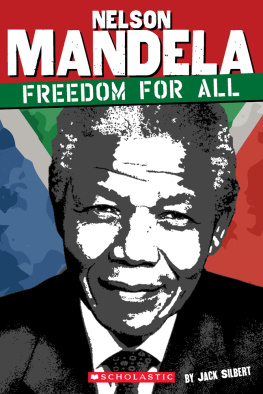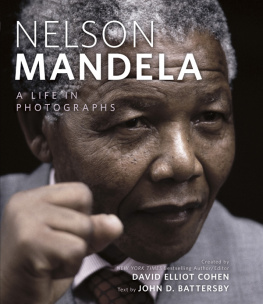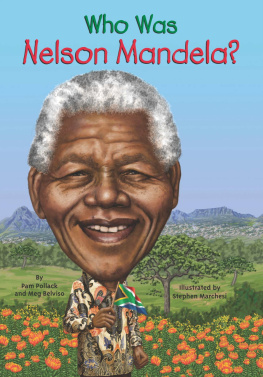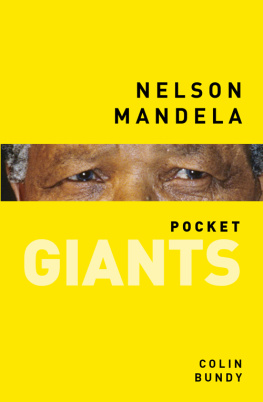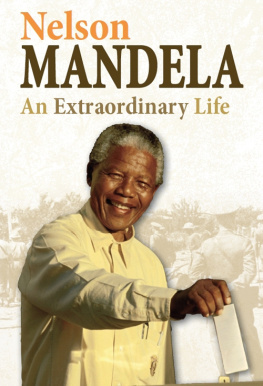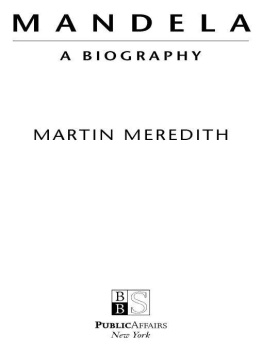On February 11, 1990, Nelson Mandela walked out of Victor Verster Prison in South Africa, a free man after twenty-seven years in jail for his political beliefs. Four years after his release, he was elected president of South Africa, a country of more than forty million people.
Incredible as that all seems, it does not begin to tell the story of Nelson Mandela. His brave, lifelong struggle for equality in South Africa and peace and fairness around the world has made him a hero and an inspiration to people everywhere. There have been hit songs and Hollywood movies about Mandela and an endless stream of paintings, poems, and books. For decades, people anywhere who are striving for freedom have looked to the life of Nelson Mandela for motivation.
Nelson Mandela dedicated his life to ending apartheid. He sought to bring equality and fair treatment to the black people of South Africa and to help blacks, whites, and other races come together in harmony. Even if it meant going to prison for twenty-seven years he refused to give up the struggle until his goals become reality.
When apartheid at last came to an end in 1994, Mandela still did not rest. He became one of the most respected world leaders in history. His ideals and accomplishments will continue providing hope for people around the globe, long into the future. And it all started in a small African village....
Nelson Mandela was born with the name Rolihlahla Mandela. In Xhosa, the language spoken by the local people, Rolihlahla means pulling the branch of a tree. But the word also has a second, more common meaning: troublemaker.
Mandela was born on July 18, 1918, in South Africa, a country on the southern tip of the African continent. He was born in a small village on the Mbashe River called Mvezo. Mvezo back then was a quiet, simple place. There were low hills and few trees. There were goats and sheep. The people lived in traditional round mud huts with cone-shaped roofs made of grass. It is not that different today.
Nkosi Mphakanyiswa Gadla Mandela was Rolihlahlas father; his mother was Nonqaphi Nosekeni. His father was an advisor to a tribal chief, and likely would have become a chief himself. However, after an argument with a local leader, Rolihlahlas father lost his job. The family had to move to nearby Qunu, an even smaller village to the north of Mvezo. Rolihlahla was still a baby.
There were no roads in Qunu, just dirt paths. The villagers didnt have much money, and mostly ate corn, pumpkins, and beans; it was all they could afford. Still, little Rolihlahla had a happy young life. He ran around in the fields with other boys, sliding on rocks in the hills and play-fighting with sticks. They would mold little animals out of clay. Some days the boys would swim in the streams or try to catch fish. When they let the girls join them, they all played hide-and-seek and other games.
The men of the village were not around much. They were off working on farms and in mines. So the women were in charge of Qunu, and the children helped out. By the age of five, Rolihlahla was a herd boy, watching over cattle and sheep.
It was rare to see a white person in Qunu. The local judge and a nearby shopkeeper were white. Sometimes Rolihlahla would see a white traveler or police officer. He was taught to view them as special. White people were to be respected but also feared.
At the age of seven, Rolihlahla began studying at the local elementary school. He was the first person in his family to go to school. It was an important moment, and Rolihlahlas father felt that his son needed to dress differently for school. Up to that point, Rolihlahla had worn a blanket that was wrapped over his shoulder and pinned at the waist like other local boys. Rolihlahlas father wanted him to have a pair of pants for school. He took an old pair of his own pants and cut them at the knees. With some string around the waist, the pants fit Rolihlahla pretty well. He might not have been the most fashionable student in school, but Rolihlahla was very proud to wear his dads pants.
Something happened on that first day in the one-room schoolhouse that would have a major impact on history. [My teacher] Miss Mdingane gave each of us an English name. This was the custom among Africans in those days, Mandela recalled in his 1994 autobiography. That day, Miss Mdingane told me that my new name was Nelson. From that day on, Rolihlahla would be known as Nelson Mandela.
Just two years later, Nelsons life took a sad but important turn when his father passed away. Chief Jongintaba Dalindyebo, a trusted friend of Nelsons father, agreed to adopt the boy. So it was time to move yet again, to the chiefs royal palace in Mqhekezweni. Though only about twenty miles from his beloved village of Qunu, Mqhekezweni and the palace, called the Great Place, seemed like a different world to Nelson. He arrived with only a tin trunk. He wore his fathers pants and an old shirt.
Nelsons new home was not a royal palace like you might imagine in a fairly tale, but for Nelson it was magical compared to his simple village. There was a large main home at the palace and several other buildings: two houses, a small school, and a collection of huts. There were also two gardens. The chief drove up in a fancy car! Nelson hadnt seen anything like it. At the palace, Nelson learned to eat with a knife and fork for the first time.
In the school, Nelson furthered his education. He studied both Xhosa and English, as well as geography and history. But history lessons werent just limited to the school building. Nelson often sat by the tall trees at the Great Place, in a meeting spot known as imbizo. Here, elders who visited the palace would gather and discuss stories from the past. Nelson learned how Africans had led peaceful lives until the arrival of white people almost three hundred years earlier. The blacks of South Africa had been willing to share what they had, but the whites just wanted to take it all. These were lessons that would stay with Nelson Mandela for many years to come.

